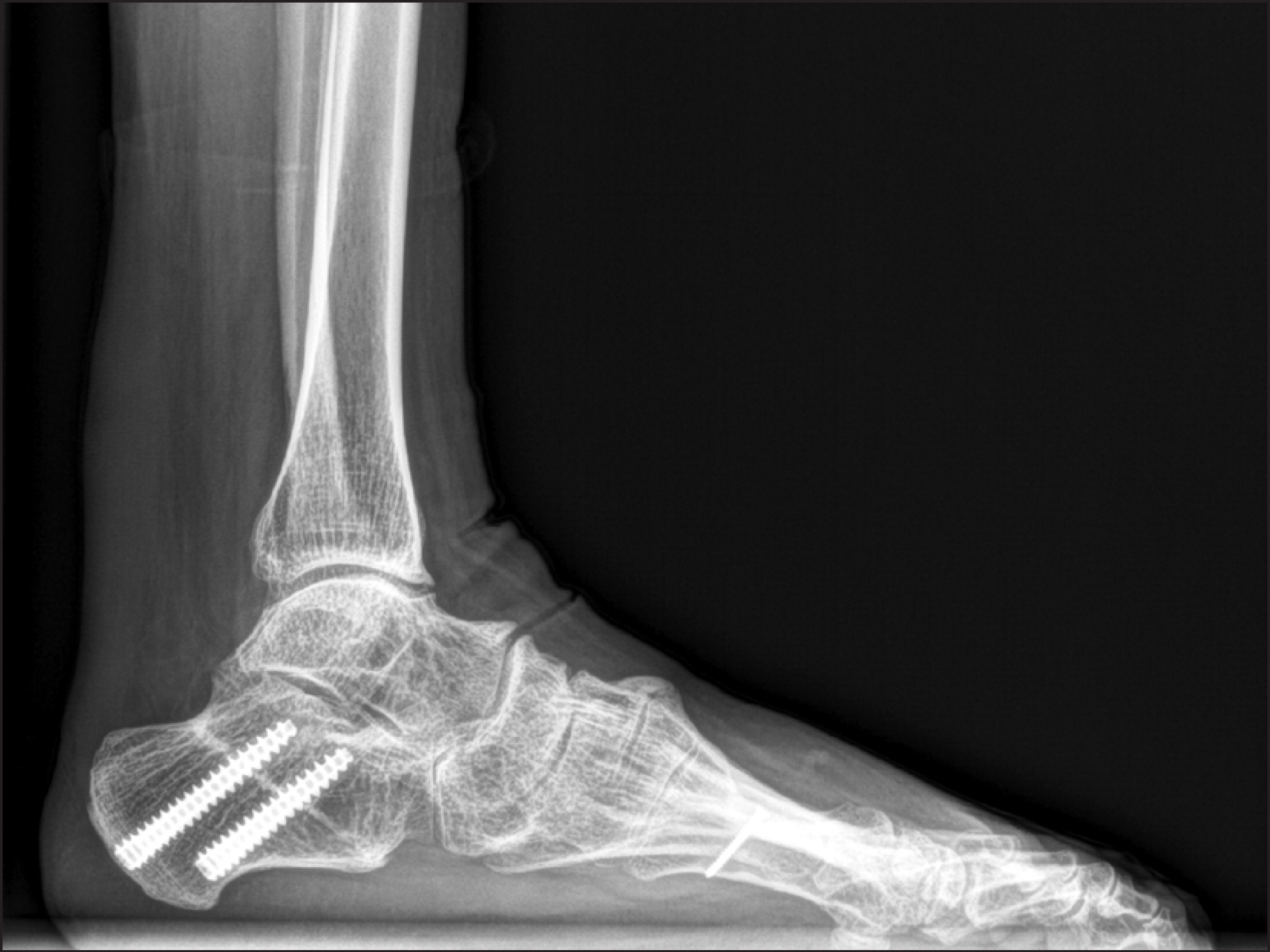J Korean Foot Ankle Soc.
2014 Jun;18(2):83-86. 10.14193/jkfas.2014.18.2.83.
Foot Drop of Contralateral Limb after Deformity Correction in a Polio Patient: A Case Report
- Affiliations
-
- 1Department of Orthopedic Surgery, Seoul National University Hospital, Seoul, Korea. leedy@snu.ac.kr
- 2Department of Anesthesiology and Pain Medicine, Seoul National University Hospital, Seoul, Korea.
- KMID: 2181667
- DOI: http://doi.org/10.14193/jkfas.2014.18.2.83
Abstract
- Postpoliomyelitis syndrome is a common neurological disorder that occurs in patients who have experienced paralytic poliomyelitis. Recently, as a result of vaccination against poliovirus, incidence of poliomyelitis is exceedingly low. However, many patients with postpolio syndrome may encounter anesthesia when undergoing surgery, such as for correction of foot deformity and other operations. We report on a 45-year-old woman who experienced paralysis of her contralateral limb after operation on the left foot under spinal anesthesia. Postoperative electromyography/nerve conduction study (EMG/NCS) was performed in order to determine the cause of paralysis. Motor power of the sequelae involved leg showed improvement with time and recovered fully to the preoperative level at six months after the index operation. A precise evaluation, including a physical examination and EMG/NCS, should be performed preoperatively when spinal anesthesia is planned for postpolio syndrome patients.
MeSH Terms
Figure
Reference
-
References
1. Cashman NR, Maselli R, Wollmann RL, Roos R, Simon R, Antel JP. Late denervation in patients with antecedent paralytic poliomyelitis. N Engl J Med. 1987; 317:7–12.
Article2. Trojan DA, Arnold DL, Shapiro S, Bar-Or A, Robinson A, Le Cru-guel JP, et al. Fatigue in postpoliomyelitis syndrome: association with disease-related, behavioral, and psychosocial factors. PM R. 2009; 1:442–9.
Article3. Gonzalez H, Olsson T, Borg K. Management of postpolio syndrome. Lancet Neurol. 2010; 9:634–42.
Article4. Hodgson PS, Neal JM, Pollock JE, Liu SS. The neurotoxicity of drugs given intrathecally (spinal). Anesth Analg. 1999; 88:797–809.
Article5. Lambert DA, Giannouli E, Schmidt BJ. Postpolio syndrome and anesthesia. Anesthesiology. 2005; 103:638–44.
Article6. Jubelt B, Agre JC. Characteristics and management of postpolio syndrome. JAMA. 2000; 284:412–4.
Article7. Wiechers DO, Hubbell SL. Late changes in the motor unit after acute poliomyelitis. Muscle Nerve. 1981; 4:524–8.
Article8. Coers C, Woolf AL. Special pathology of the intramuscular nerves and nerve endings. Coёrs C, Woolf AL, editors. Innervation of muscle: biopsy study. Springfield: Thomas;1959. p. 64–6.9. Connelly NR, Abbott TC. Successful use of succinylcholine for cesarean delivery in a patient with postpolio syndrome. Anesthesiology. 2008; 108:1151–2. author reply 1152–3.
Article10. Bordes J, Gaillard PE, Lacroix G, Palmier B. Spinal anaesthesia guided by computed tomography scan in a patient with severe postpolio sequelae. Br J Anaesth. 2010; 105:702–3.
Article
- Full Text Links
- Actions
-
Cited
- CITED
-
- Close
- Share
- Similar articles
-
- Surgical Correction of Foot Drop in Leprosy
- Isolated Painless Foot Drop due to Cerebral Infarction Mimicking Lumbar Radiculopathy: A Case Report
- Corrective Surgery Using Virtual Surgical Simulation and a Three-Dimensional Printed Osteotomy Guide: A Case Report
- The Effect of Foot Orthosis on Spinal Curvature by Correction of Foot Pronation and Limb Length Discrepancy
- Surgical Treatment of Diabetic Foot Disease




